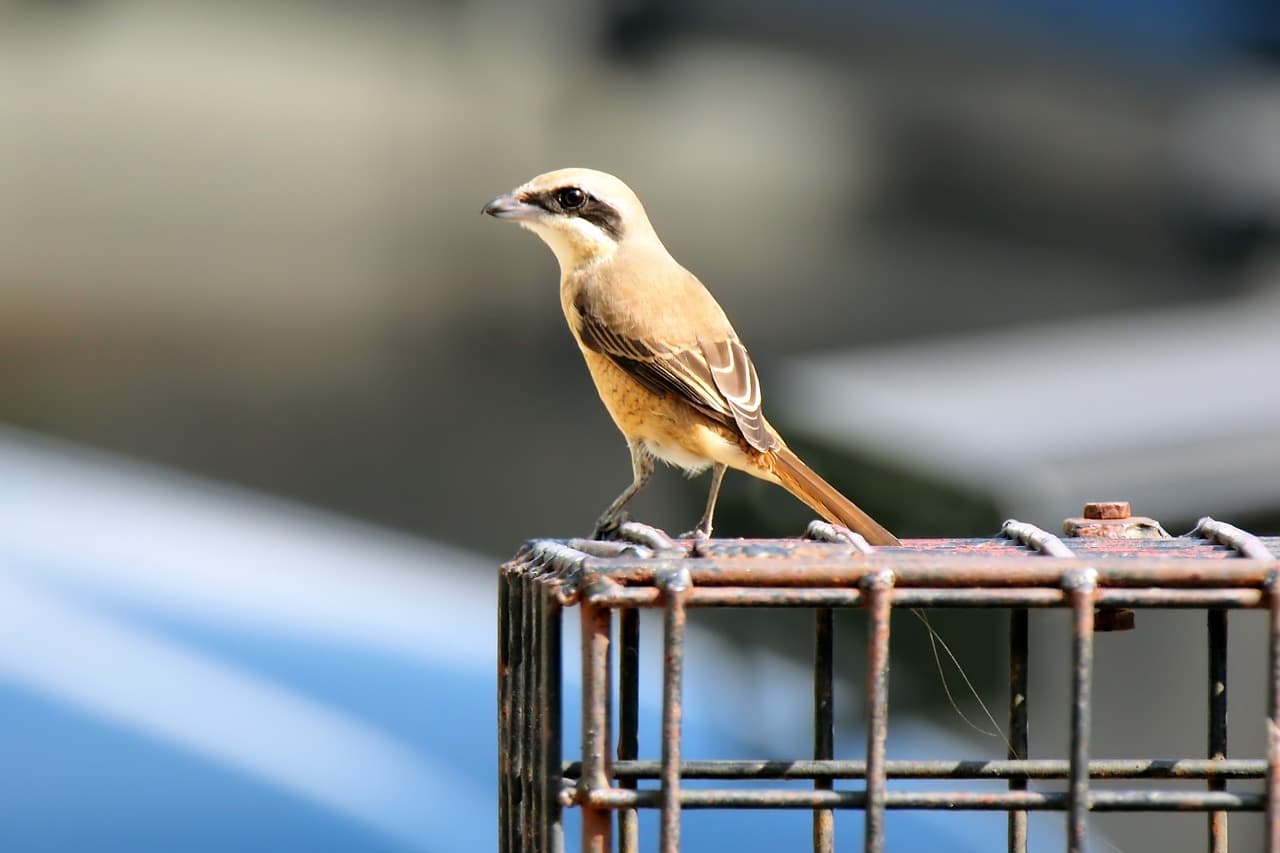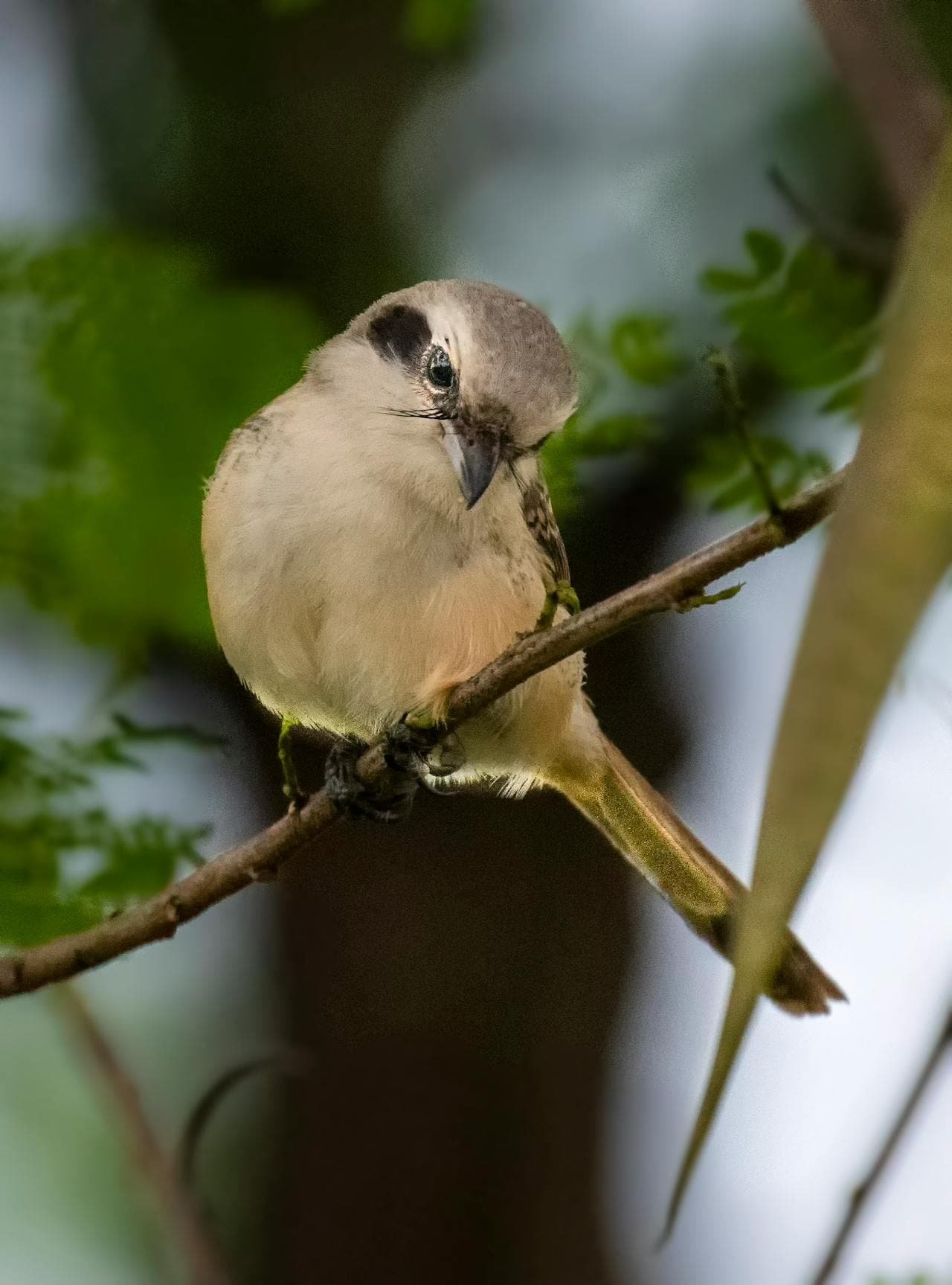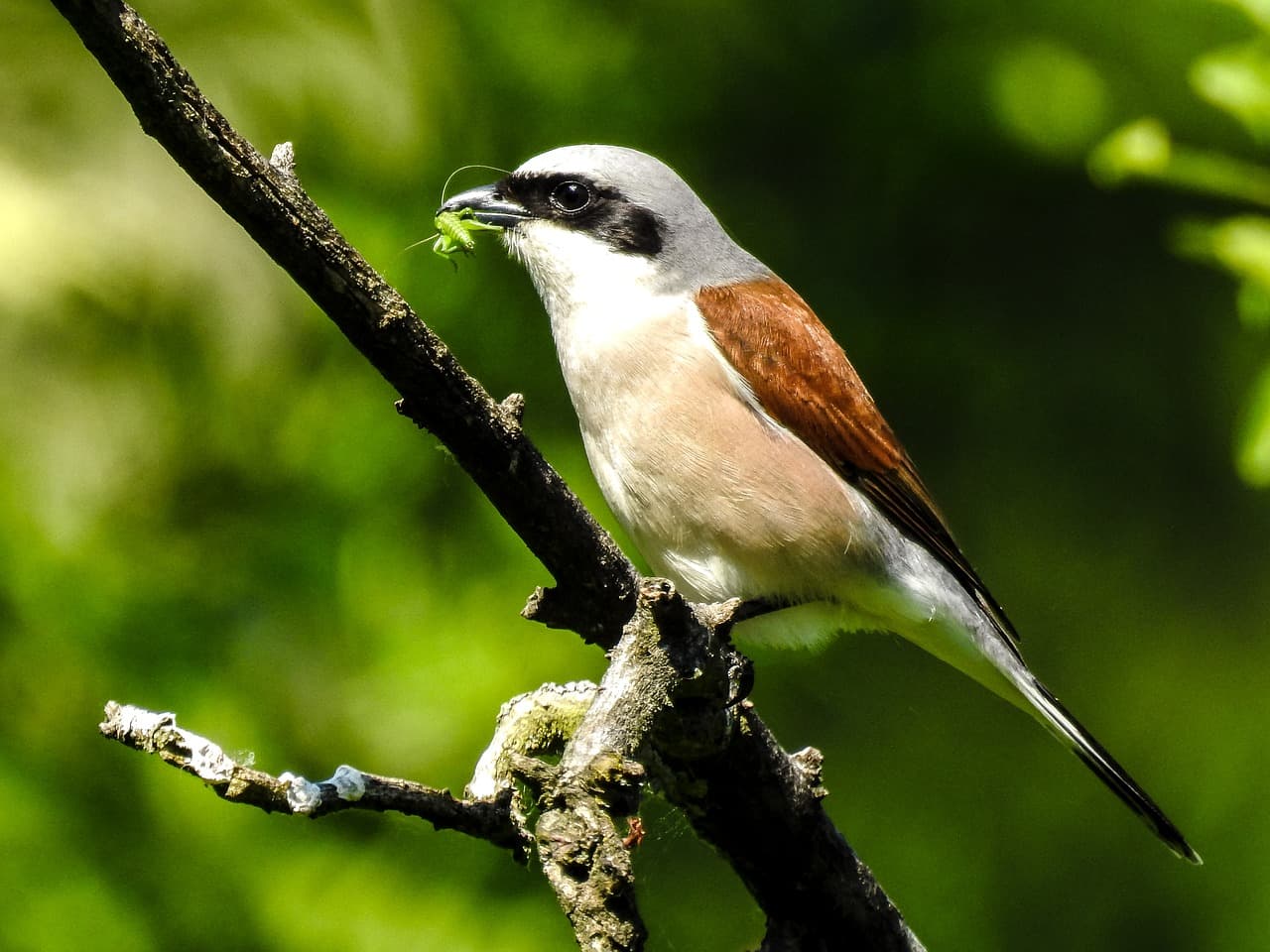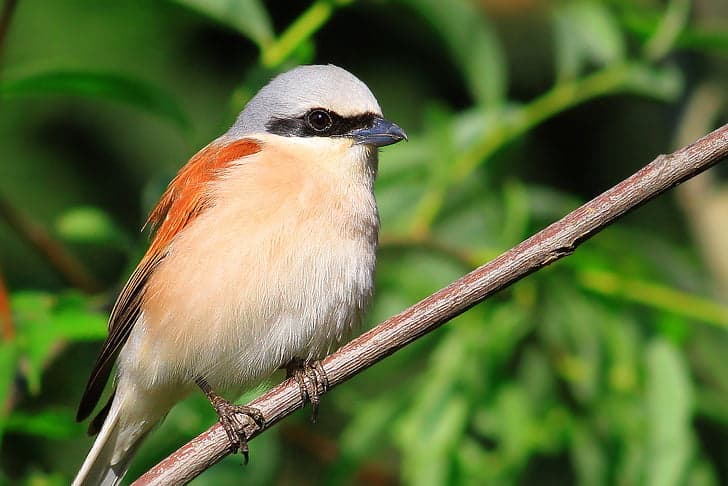Brown shrike (ចាបដូនតា) aka the butcherbird is one of the shrike species residing in Cambodia. People know of its name, but little do they know how they hunt and store their food. This is what we are going to talk about today to get more ideas about this little menace of a bird. Let’s take a read below and see how much you know about brown shrikes.
Appearance

Just like the name suggests, a brown shrike is mainly brown on the upperparts of the bird’s body. A male brown shrike has a distinctive black mask through its eyes, and the color can be paler in colder months. Female brown shrikes have dark brown masks, and they tend to have fine scalloping on the underside. Both sexes have brown eyes, dull-colored bills with pink bases, and blackish legs and feet. Shrikes look quite similar to each other so it is difficult to recognize a specific species sometimes.
Behavior

Brown shrikes are migratory, they breed in northern Asia and they spend their winter time in South and Southeast Asia. They establish their territories in winter with their loud chattering or rattling calls shortly after their arrival. The winter period is in August and September but their departure is from April onwards. Between those months is their breeding season which is late May or June. Brown shrikes use the forest to semi-desert to build a nest in a bush or tree to lay their eggs. These birds are largely monogamous, and the males will feed the males during the 2 weeks of incubation period.
Feeding & Habitats

Shrikes are insectivores, and they feed mainly on insects and vertebrates such as beetles, butterflies, crickets, grasshoppers, moths, and more. Sometimes they prey on amphibians, lizards, small birds, and small rodents; the meal that they can store for later feeding. Their hunting and storage habit earns them the nickname of the butcherbird, and it is quite scary for a bird so small.
When hunting, it observes from a perch before flying down toward the ground when it spots prey. Its point beaks are known for pinching the prey’s spinal cord to induce paralysis. After grabbing hold of the prey, a brown shrike will vigorously shake the victim to break its neck. If the prey is too big to kill with its pointy beak, it impales the poor animal on thorns and starts feeding. In case a brown shrike cannot finish its meal in one go, it will skewer the animal on sharp branches or thorns.
Brown shrikes are very common in Asia, but they migrate to various parts of the continent in different seasons. Within their range, they inhabit brushy thickets, forest clearings, forest edges, and vegetated riparian areas. Brown shrikes are also found in open scrub habitats where they can perch on top of thorny bushes and trees.
Related Post: Everything You Want To Know About Shrikes
